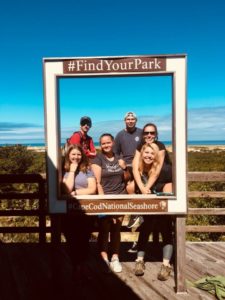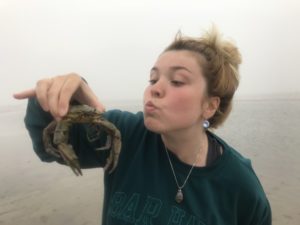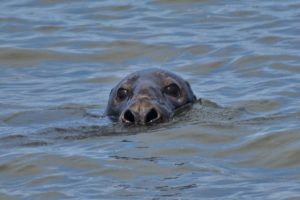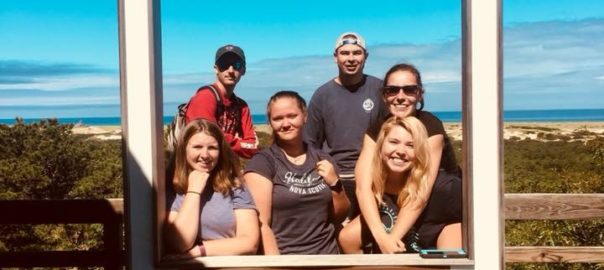After an adventurous week in Canada we all were eagerly awaiting the next phase of the trip, on the beaches of Cape Cod. Following a long day of driving we arrived in Orleans on Cape Cod the night of September 9th. As we transitioned into the next section of the semester, Marine Ecology, what better place to start than the beach! This past week was dedicated to making beach profiles, measuring sediment distributions, determining wave height and energy, all to establish the morphodynamic state of the beaches. We also surveyed the fauna found at high- and low-energy beaches. Although we were staying on the Massachusetts Bay side of Cape Cod, we compared the different energy levels and other morphometric features between the Bay and ocean side beaches of the Cape Cod National Seashore.
This past week was dedicated to making beach profiles, measuring sediment distributions, determining wave height and energy, all to establish the morphodynamic state of the beaches. We also surveyed the fauna found at high- and low-energy beaches. Although we were staying on the Massachusetts Bay side of Cape Cod, we compared the different energy levels and other morphometric features between the Bay and ocean side beaches of the Cape Cod National Seashore.
In order to conduct a beach profile, it is necessary to first observe. We noted obvious features such as the shape of the beach, traffic of people, and even birds. Then we went more in depth by measuring sections in which there was a change of slope. This allowed us to divide the beach into its component parts and note changes the in fauna from one part to another. The two beaches we observed were Skaket beach located on the Bay side and Nauset Light beach on the ocean side. We concluded that Skaket beach consisted of low energy system where fauna such as lady crabs, hermit crabs, razor clams, and various algae were present because it was a stable environment. Nauset Beach on the other hand had large waves and no obvious fauna suggesting a high energy environment.
When we weren’t making beach profiles we took advantage of staying right on the beach. We hung out in the sun, went swimming, and most importantly found time to relax. We even saw a few seals! Saturday, September 15 marked the day of our halfway point of the semester. It’s crazy to think of all that we’ve accomplished in 5 whole weeks! The next 10 days will be spent at the Darling Marine Center located in Walpole, Maine, where we will continue our studies on estuaries, rocky intertidal habitats, and mudflats.


